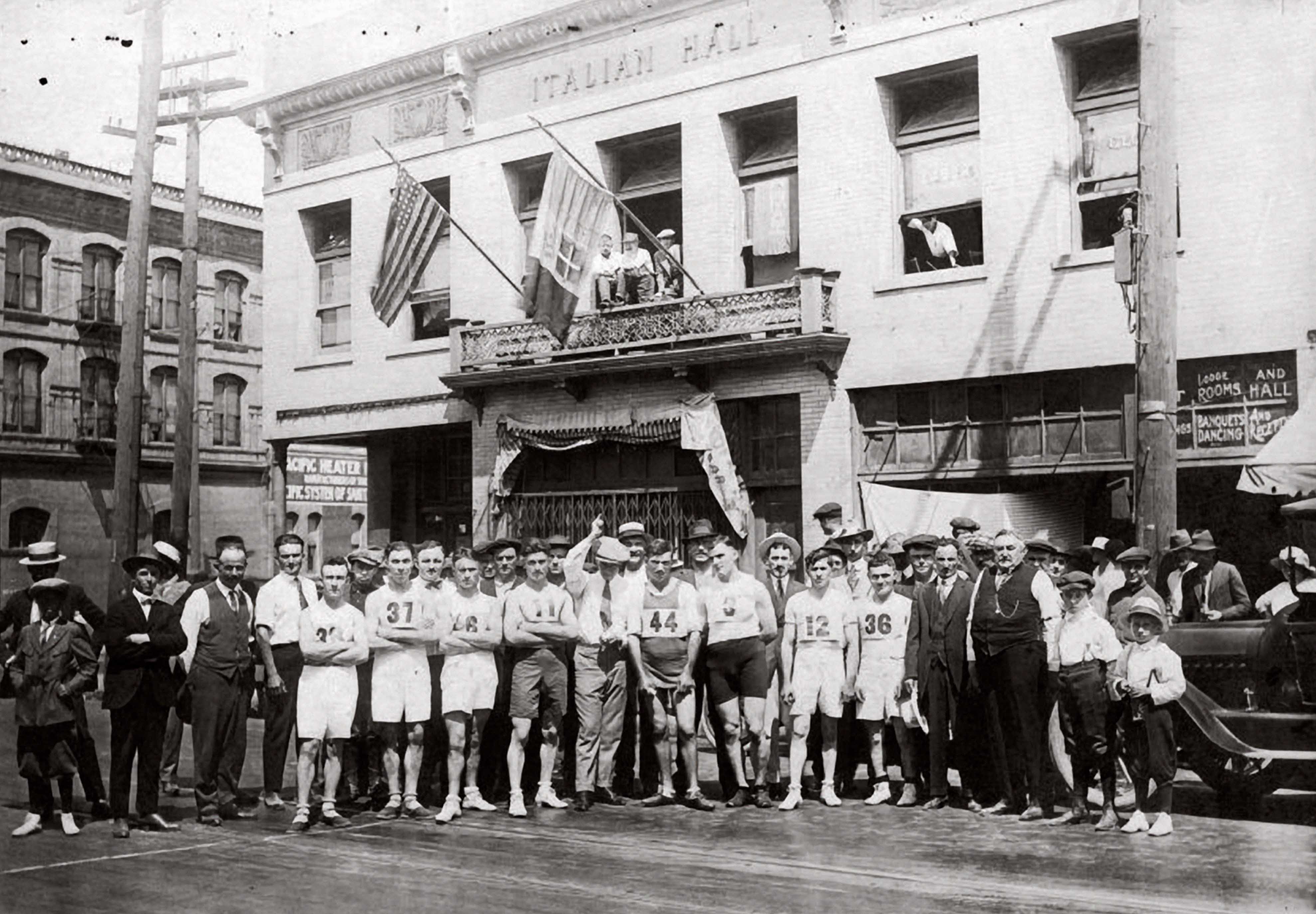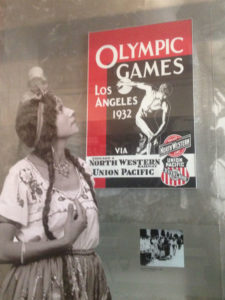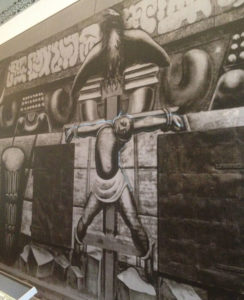I was born and raised in Modena, Italy, moved to the Unites States after college in 1972, became an American citizen 6 years later. That makes me a first-generation Italian-American. I consider Los Angeles my adopted hometown, having lived here for over 40 years. So it was highly educational for me to visit the new Italian American Museum in downtown LA, and learn about the history of Italian immigrants in California.

IAMLA is housed in the newly restored Italian Hall, an elegant two-story brick building constructed in 1908, that for decades served as a community center for Los Angeles’ Little Italy, hosting weddings, political meetings and dances, before falling into disrepair in the 1950s. The old-fashioned mosaic tile work and hardwood floors provide a period setting for the collection of artifacts displayed in glass cases and the photographs projected on giant screens. Small video monitors offer an in-depth exploration of various aspects of Italian-American history, that can be studied from anywhere in the world on the IAMLA website.
Italians started immigrating to Mexican Los Angeles in the 1820s, mostly from Northern regions like Piemonte and Liguria, importing their family trades: fishing, farming and wine-making. They introduced to California agriculture new crops, like broccoli and eggplant. Their language was very similar to the local Spanish, they shared the same Catholic religion, so they were able to assimilate easily and to prosper.

For example Pelanconi House, built in 1855 on Olvera Street, was an Italian winery as of 1871. In 1930 it was bought by Señora Consuelo who turned it into the Mexican restaurant La Golodrina. Mariachi bands still play for diners on the outdoor patio.
Prohibition, that went into effect in 1920, had disrupted wine production, but alcohol consumption was still legal. On the ground floor of Italian Hall, the Paggi saloon, with its long carved mahogany bar inset with stained glass, operated from 1908 to 1920. During the building’s restoration a metal door was discovered, that used to lead to a secret speakeasy.
In 1932 Frank Ferenz, an Austrian, was renting the second floor of Italian Hall for his Plaza Art Center. He commissioned Mexican artist David Alfaro Siqueiros to paint a mural on the exterior wall, overlooking a terrace that would soon house a beer hall, after the end of prohibition in 1933. In 1930, Olvera Street had been converted into a Mexican marketplace to attract settlers to the land of sunshine, orange groves, beaches and dancing señoritas. In 1932, Los Angeles hosted the Olympics, the eyes of the world were on our city, and the mural was supposed to promote this carefree image. But the communist artist Siquerios named it América Tropical, Oprimida y Destrozda por los Imperialismos, depicting a naked Indian on a cross surmounted by an American eagle, surrounded by jungle vegetation and Mayan symbols, with two armed guerrillas crouching in the upper corner. By 1938, the controversial painting had been whitewashed. Fifty years later the Getty Conservation Institute partnered with the City of Los Angeles for its preservation, and now the faded ghostly outline of the once brightly colored mural is visible from a platform of the América Tropical Interpretive Center, that opened in 2012.


To learn about the history of our city, founded in 1781 by 44 families emigrated from Northern Mexico, visit the permanent exhibit Becoming Los Angeles that opened at the Natural History Museum in 2013.
To find out about the hardships and suffering of poor immigrants from Italy, watch the PBS documentary series, The Italian Americans, that first aired in February 2015.
[alert type=alert-white ]Please consider making a tax-deductible donation now so we can keep publishing strong creative voices.[/alert]
